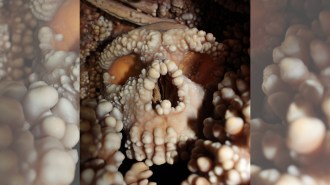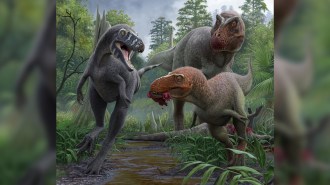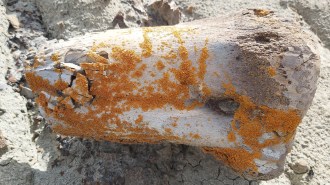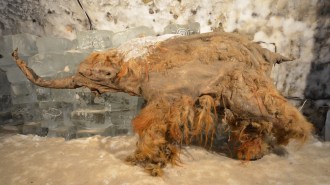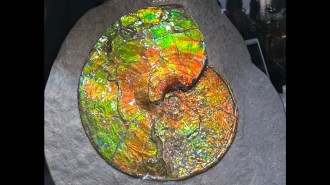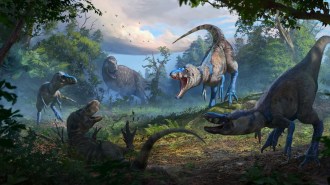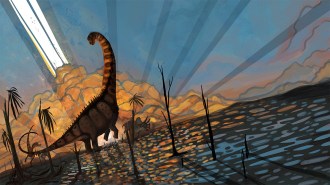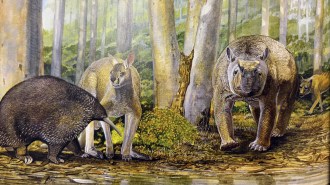Fossil confirms that early arthropods molted
A 505-million-year-old fossil provides hard proof of what scientists had previously only suspected: Ancient arthropods shed their exoskeletons during growth, just as their modern relatives do.
Arthropods, a class of animals named after the jointed legs characteristic of its member species, includes creatures as diverse as king crabs, insects, and scorpions. Many periodically shed their hard outer skins as they grow. Arthropods make up about three-fourths of all known living and extinct species.
Scientists have found some fossils of trilobites—aquatic arthropods that dominated many ancient seafloor ecosystems but went extinct about 250 million years ago—near matching bits of fossilized exoskeleton. None of those fossils, however, portrays the very act of shedding, says Desmond H. Collins of the Royal Ontario Museum in Toronto.
The newly discovered telltale specimen is of an ancient trilobite relative dubbed Marrella splendens. The fossil is like a snapshot of an animal emerging from its exoskeleton, says Collins. The singular find is just one of the more than 25,000 fossils of its species collected from western Canada’s Burgess Shale since 1912.
The rarity of the find stems from two factors, Collins and his colleague Diego C. Garcia-Bellido suggest in the May 6 Nature. First, very few ancient ecosystems were conducive to preserving soft tissues, such as those of a freshly molted arthropod. Second, the organism would have had to die and be fossilized during the minuscule fraction of its life span spent molting.
